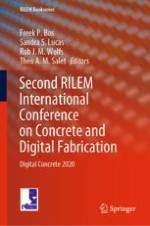This book gathers peer-reviewed contributions presented at the 2nd RILEM International Conference on Concrete and Digital Fabrication (Digital Concrete), held online and hosted by the Eindhoven University of Technology, the Netherlands from 6-9 July 2020. Focusing on additive and automated manufacturing technologies for the fabrication of cementitious construction materials, such as 3D concrete printing, powder bed printing, and shotcrete 3D printing, the papers highlight the latest findings in this fast-growing field, addressing topics like mixture design, admixtures, rheology and fresh-state behavior, alternative materials, microstructure, cold joints & interfaces, mechanical performance, reinforcement, structural engineering, durability and sustainability, automation and industrialization.
